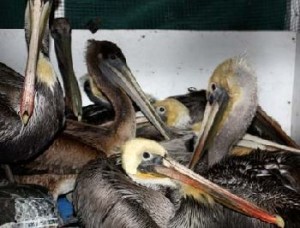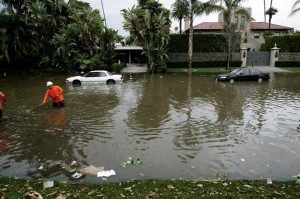Evidence of Climate Change?
Over 300 residents of Los Angeles were ordered to evacuate because of the threat of mudslides from the rains. These rains are related El Niño, a warm ocean current from the South Pacific, according to CNN meteorologist Chad Myers (click here). The effects of El Nino and the Southern Oscillation are amplified by the amount of carbon dioxide in the atmosphere and the oceans, which has increased from approximately 250 parts per million to 390 ppm in the last 150 years, due primarily to burning coal, oil, and other fossil fuels.
City and county officials warned Tuesday that significant rainfall on already saturated soil could cause mudslides and debris flows, especially below the steep slopes that burned last year.
Evacuations in La Canada Flintridge, La Crescenta and parts of Glendale were scheduled to begin Wednesday, Jan. 20, 2010. Officials hope to have everyone out of danger by the time the third storm in as many days hits Southern California.
For details on El Nino and the Southern Oscillation on the National Oceanic and Atmospheric Administration, NOAA web-site click here . For an overview on Popular Logistics, click here and here . Refer also to William James Burroughs’ reference text, Climate Change, A Multidisciplinary Approach, 2nd Edition, 2007, Cambridge University Press, 2007, ISBN 978-0-521-87015-3 or 978-0-521-69033-1.
 The rains are also stressing the California brown pelican. Bird rescue experts at the International Bird Rescue Research Center, IBRRC, are fighting to save over 100 cold, wet California Brown Pelicans, as more hypothermic birds keep coming. Their Waterproof feathers usually allow pelicans to float and stay insulated from weather changes, the current massive runoff from storms has brought even more grease, car oil sheen, fish oils and other forms of surface pollution into the coastal areas where these birds feed. “Many brown pelicans have been found soaking wet and in a critical condition,” says IBRRC Director Jay Holcomb, “and since the storms kept coming, one after another, the wet birds did not have time to dry off and feed, and are becoming weak and hypothermic.
The rains are also stressing the California brown pelican. Bird rescue experts at the International Bird Rescue Research Center, IBRRC, are fighting to save over 100 cold, wet California Brown Pelicans, as more hypothermic birds keep coming. Their Waterproof feathers usually allow pelicans to float and stay insulated from weather changes, the current massive runoff from storms has brought even more grease, car oil sheen, fish oils and other forms of surface pollution into the coastal areas where these birds feed. “Many brown pelicans have been found soaking wet and in a critical condition,” says IBRRC Director Jay Holcomb, “and since the storms kept coming, one after another, the wet birds did not have time to dry off and feed, and are becoming weak and hypothermic.
Evidence of Climate Change?
Is the drought of the last few years, followed by this years heavy rain and flood a shift in the weather or a change in the climate?

